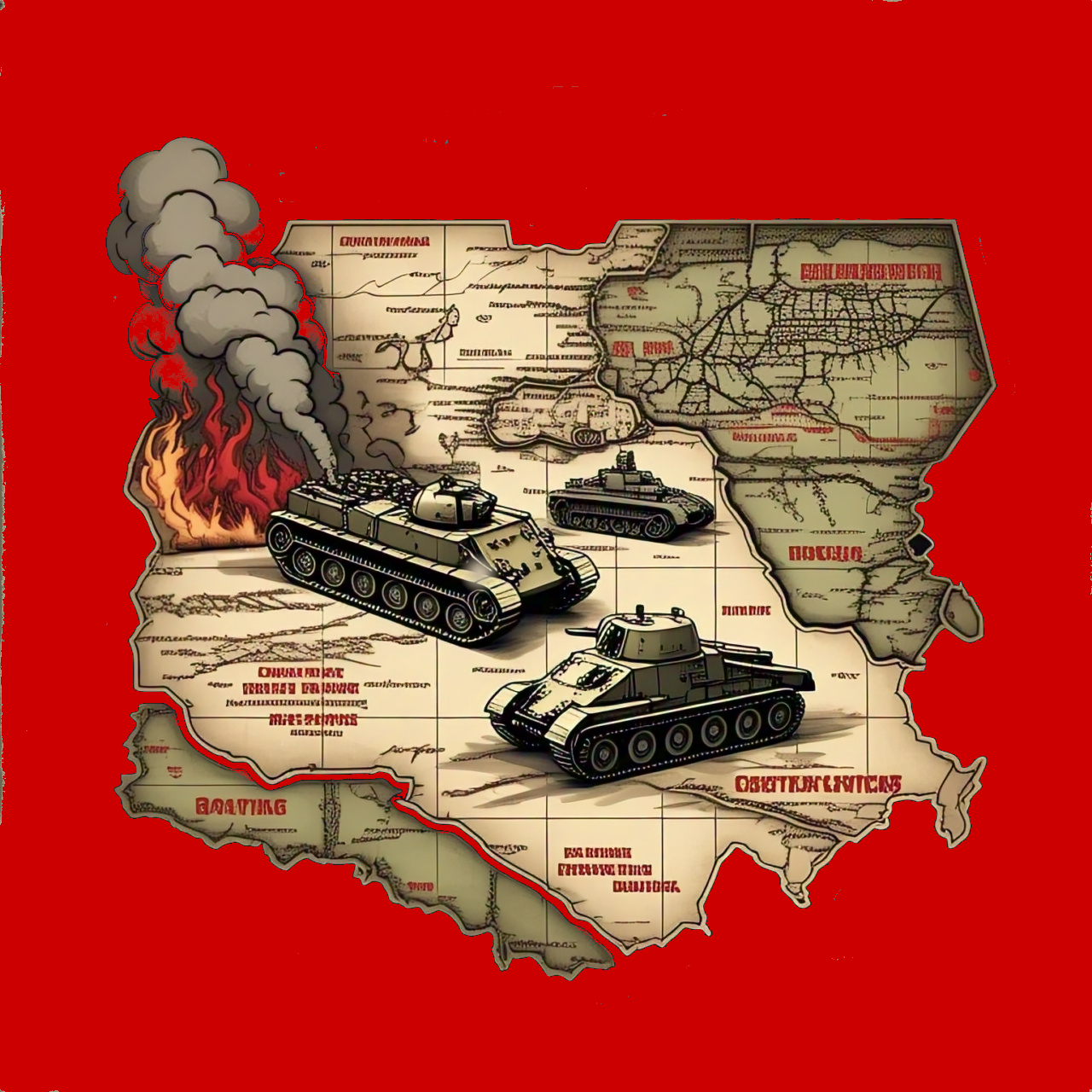5th Soviet Army
The 5th Soviet Army formed in August 1939, consolidating forces from the Northern Army Group in the Kiev Military District. It participated in the Soviet invasion of Poland, showcasing its strategic importance. The army later defended against German advances during Operation Barbarossa, demonstrating resilience and adaptability in critical early World War II battles.

Commanders
Major General Mikhail Ivanovich Potapov, 1st January to 20th Sept 1941

Major General Mikhail Ivanovich Potapov led the 5th Soviet Army in the war’s opening battles; he directed their defense against the German advance. Potapov’s forces faced immense pressure, they struggled to hold back the initial overwhelming German offensive.
Major General Dmitry Lelyushenko, 10th October 1941 to 17th October 1941

Major General Dmitry Lelyushenko took command of the 5th Soviet Army amidst intense fighting; he reorganized the troops for counterattacks. Lelyushenko’s leadership aimed to stabilize the front, he worked to bolster the army’s resilience against persistent enemy pressure.
Major General Leonid Govorov, 18th Oct 1941 to 25th April 1942

Major General Leonid Govorov briefly commanded the 5th Soviet Army during a critical period; he implemented new defensive strategies. Govorov’s expertise focused on artillery deployment, he sought to maximize firepower against the advancing enemy forces.
Major General Ivan Fedyuninsky, 25th April 1942 to 15th October 1942

Major General Ivan Fedyuninsky assumed command of the 5th Soviet Army during fierce combat; he directed their operations with determination. Fedyuninsky’s strategies focused on tactical flexibility, he aimed to disrupt enemy advances through swift counter maneuvers.
Colonel General Yakov Cherevichenko, 15th Oct 1942 to 27th February 1943

Colonel General Yakov Cherevichenko briefly led the 5th Soviet Army in a period of significant conflict; he implemented tactical adjustments. Cherevichenko’s leadership focused on bolstering the army’s defensive capabilities, he sought to stabilize the front lines under intense pressure.
Lieutenant General Vitaly Polenov, 27th February 1943 to 24th October 1943

Lieutenant General Vitaly Polenov led the 5th Soviet Army in a crucial phase of the war; he oversaw their tactical deployments. Polenov’s command prioritized defensive strength, he worked to maintain the army’s position against persistent enemy attacks.
Lieutenant General Nikolay Krylov, 24th October 1943 to 16th October 1944

Colonel General Nikolay Krylov commanded Soviet forces with exceptional skill, contributing significantly to victories during World War II campaigns. He led the 5th Army and later the Strategic Missile Troops, showcasing strategic brilliance and leadership. His career reflected dedication to military innovation, earning him recognition as a Marshal of the Soviet Union.
Lieutenant General Pyotr Shafranov, 16th October 1944 to 15th December 1944

Lieutenant General Pyotr Shafranov commanded the 5th Soviet Army briefly in 1944, showcasing exceptional leadership during critical operations. He directed strategic maneuvers effectively, contributing to the Soviet Union’s military successes. His tenure reflected his tactical expertise and dedication, which earned him recognition as a Hero of the Soviet Union for his achievements.
Colonel General Nikolay Krylov, 12th December 1944 to December 1945

Colonel General Nikolay Krylov commanded Soviet forces with exceptional skill, contributing significantly to victories during World War II campaigns. He led the 5th Army and later the Strategic Missile Troops, showcasing strategic brilliance and leadership. His career reflected dedication to military innovation, earning him recognition as a Marshal of the Soviet Union.
Active
- 1939 to 1945
Engagements
- Operation Barbarossa
- Battle of Moscow
Army Composition
22nd June 1941
- 15th Rifle Corps
- 45th Rifle Division
- 62nd Rifle Division
- 27th Rifle Corps
- 87th Rifle Division
- 125th Rifle Division
- 135th Rifle Division
- 22nd Mechanised Corps
- 19th Tank Division
- 41st Tank Division
- 215th Motorized Division
- 2nd Fortified Region
- Seven artillery regiments
- 2 NKVD border regiments
- Engineer regiment
1st August 1944
- 45th Rifle Corps
- 159th Rifle Division
- 184th Rifle Division
- 338th Rifle Division
- 65th Rifle Corps
- 97th Rifle Division
- 144th Rifle Division
- 371st Rifle Division
- 72nd Rifle Corps
- 63rd Rifle Division
- 215th Rifle Division
- 277th Rifle Division
20th April 1945
- 17th Rifle Corps
- 187th Rifle Division
- 366th Rifle Division
- 45th Rifle Corps
- 157th Rifle Division
- 159th Rifle Division
- 184th Rifle Division
- 65th Rifle Corps
- 97th Rifle Division
- 144th Rifle Division
- 190th Rifle Division
- 371st Rifle Division
- 72nd Rifle Corps
- 63rd Rifle Division
- 215th Rifle Division
- 277th Rifle Division
- Tank Brigades
- 72nd Tank Brigade
- 76th Tank Brigade
- 208th Tank Brigade
- 210th Tank Brigade
- 218th Tank Brigade
- 105th Fortified Area
- 35 Artillery Brigades
History
The 5th Soviet Army played a crucial role in World War II, showcasing resilience and strategic brilliance during key battles. Initially formed in 1939, it participated in the Soviet invasion of Poland, demonstrating its operational capabilities. During Operation Barbarossa, the 5th Army faced significant challenges, including encirclement and destruction near Kiev, but it regrouped effectively.
Under new leadership, the 5th Army contributed to the defense of Moscow, halting the German advance with determined counterattacks. It later participated in numerous offensive campaigns, reclaiming Soviet territory and pushing westward into Poland and East Prussia. The army’s adaptability and coordination proved vital in these operations.
In 1945, the 5th Army shifted focus to the Far East, joining the Soviet attack on Japan during the final stages of the war. Post-war, it remained active in the Far East Military District, safeguarding borders and adapting to evolving military needs. Its legacy reflects dedication and strategic impact.
Gallery
Other blog categories that may be of interest. 10mm ACW Project, 10mm AWI Project, 10mm AZW Project, 10mm CGW Project, 10mm FIW Project, 10mm Sci-Fi Projects, Aliens, Dropzone Commander, Terra Nova, 10mm WWI Project, 10mm WWII Project, 10mm Zombie Project, Battle Reports & Scenarios, Making Scenery & Terrain, Painting Guides, Shows & Events, Solo Wargaming, Wargaming Projects, Wargaming Rules.


Leave a Reply